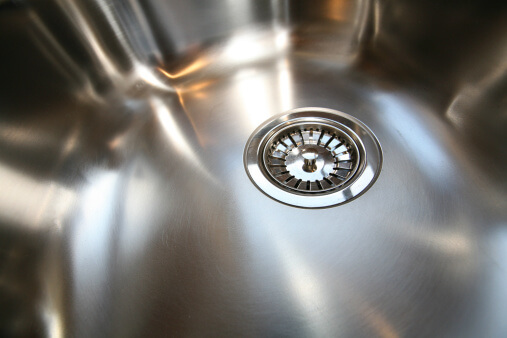
Kitchen Sinks: Choose the Right Strainer
As humble as these devices are, kitchen sink strainers perform several important functions. They allow water to drain freely but prevent food waste from entering the plumbing where it can lead to blockages, and with a simple twist they serve as a watertight stopper when you want to fill the sink with water.
Kitchen sink strainer assemblies consist of two components: The flanged body which is installed in the sink drain hole opening and the strainer basket which is typically removable. Whether you’re installing a new sink, replacing a damaged strainer or upgrading to a new look, there are a number of factors to consider:
Material & Finish. Strainer assemblies come in a wide variety of materials and finishes. For long-lasting durability, look for bodies and baskets made from stainless steel, brass or cast brass or high grade plastics and polymers. Metal finishes range from standard stainless steel to polished brass, bright chrome and oil rubbed bronze, while plastic assemblies come in colors that match popular sink colors. Pick a finish that blends with your sink material or color, matches an existing disposer flange or matches the fixtures.
Diameter. The standard kitchen sink drain hole opening is 3.5 inches, but some are as large as 4 inches. Check the strainer product specifications and select a strainer sized to fit your opening.
Sink Thickness. Choose a strainer suited to the thickness of the sink. Standard strainer assemblies designed for stainless steel sinks may not fit an enameled cast iron sink which is thicker. Read the product specifications and confirm the strainer will accommodate your sink’s thickness, which typically ranges from 1/8 to 3/8 inches.
Special Features. Your new basket strainer should stop water and prevent its loss when you fill the sink. To accomplish this, look for enhancements such as ball bearing posts that fit securely, superior rubber stoppers that form an effective seal, or threaded posts that secure the basket to the drain. Consider other requirements, such as extra deep strainers with larger baskets.
Installation Features. Basket bodies are engineered for different types of installation. Many are designed to drop into the drain hole where they’re sealed with plumbers putty and manual pressure, but some models feature twist-lock retaining rings or threaded flanges that secure the body to the sink.
If you’re replacing an existing strainer, simply measure the diameter of the strainer opening and the strainer depth, then use those dimensions to find a replacement. For a new sink, measure the diameter of the drain hole opening and the sink thickness, and use these measurements to select the size and style of strainer that suits your needs.